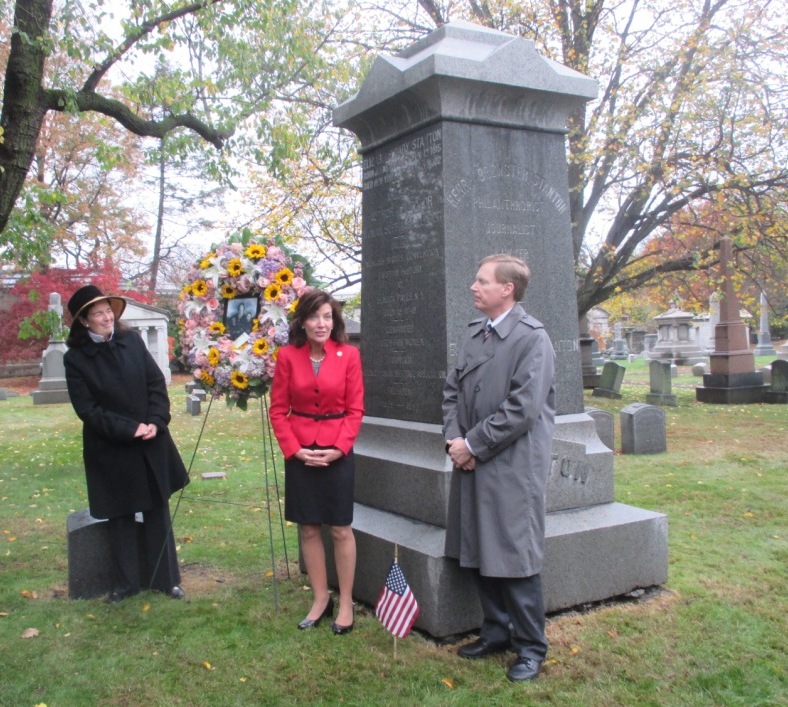
Photo by Vivian Carter
An American milestone was celebrated at Woodlawn Cemetery, with women around the area celebrating the 200th birthday of an activist for the women’s suffrage movement.
Elizabeth Cady Stanton, who inspired millions of women to make their voices heard in the battle for the right to vote, was remembered Nov. 12, who was born on that day 200 years ago. The event was marked by a ride along around the cemetery and an appearance by New York’s Lieutenant Governor, Kathleen C. Hochul, one of the few female lieutenant governors in the state’s history.
First stop for the group was the Stanton family burial plot, found in a scenic center of the sprawling grounds. The fall leaves still clung to many trees, adding splashes of red, gold and orange to the scene. Two actors arrived at the gravesite, colorfully dressed in period costumes to depict Cady Stanton and her fellow civil rights pioneer, Susan B. Anthony.
Hochul praised Stanton as “an iconic New Yorker” and “a trailblazer whose tireless advocacy helped spearhead the success of the women’s rights movement.” Coline Jenkins, great-great granddaughter of the activist, spoke with reverence about the inscription on the family monument, which states that Cady Stanton “Demanded Votes for Women.” Jenkins said her mother and grandmother are also buried at Woodlawn, and declared she would join them, someday. Woodlawn Cemetery, recognized as a National Historic Landmark site, is the resting place of other prominent American women, including Carrie Chapman Catt, Alva Vanderbilt Belmont, Celia Cruz, Nellie Bly, and Madam C.J. Walker.

Photo by Vivian Carter
The group then headed to the Woolworth Chapel, where a proclamation honoring Stanton for her role in making New York the birthplace of women’s rights was read by a staff member of U.S. Senator Kirsten Gillibrand. New York State Assemblyman Jeffrey Dinowitz humorously praised Stanton’s foresight in choosing to be buried in his district. There was a reading of the Declaration of Sentiments, a version of the Declaration of Independence drafted by Stanton to articulate the philosophy of the suffrage movement at the 1848 Seneca Falls Convention.
Jenkins proudly informed the group that a long-time slight to women would soon be corrected, as the only female statues now in Central Park depict fictional characters like Alice in Wonderland and Mother Goose. She announced, to great applause, that New York City Parks Commissioner, Mitchell Silver, recently granted a plot of land in Central Park for the eventual construction of a statue honoring Cady Stanton, Anthony, and other female suffragettes.




